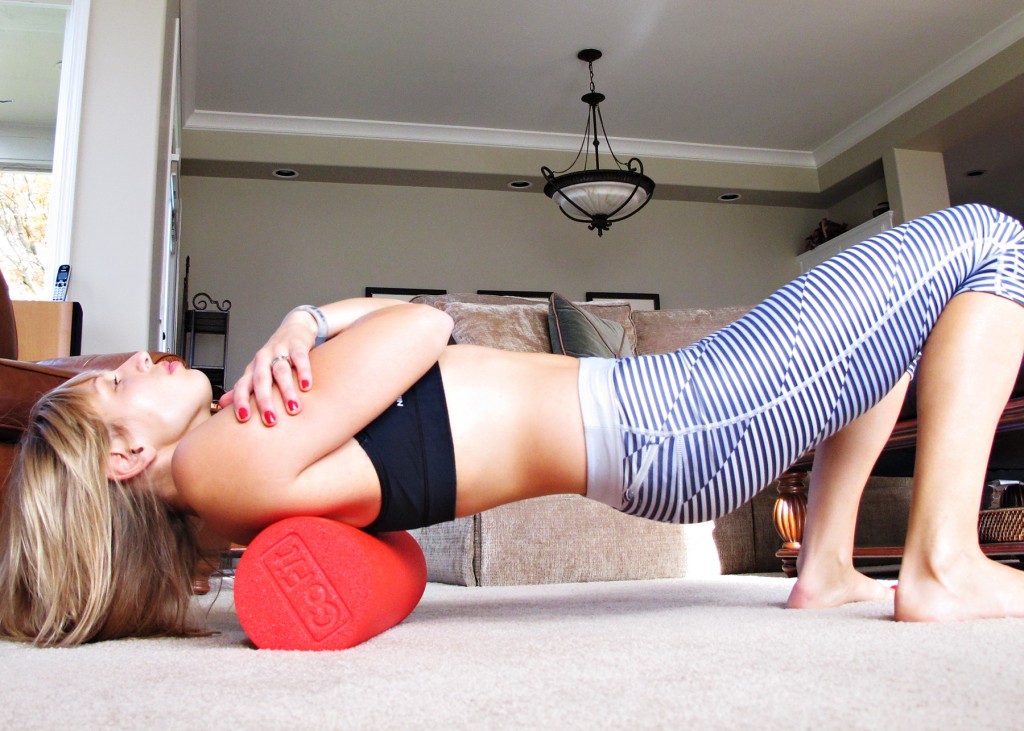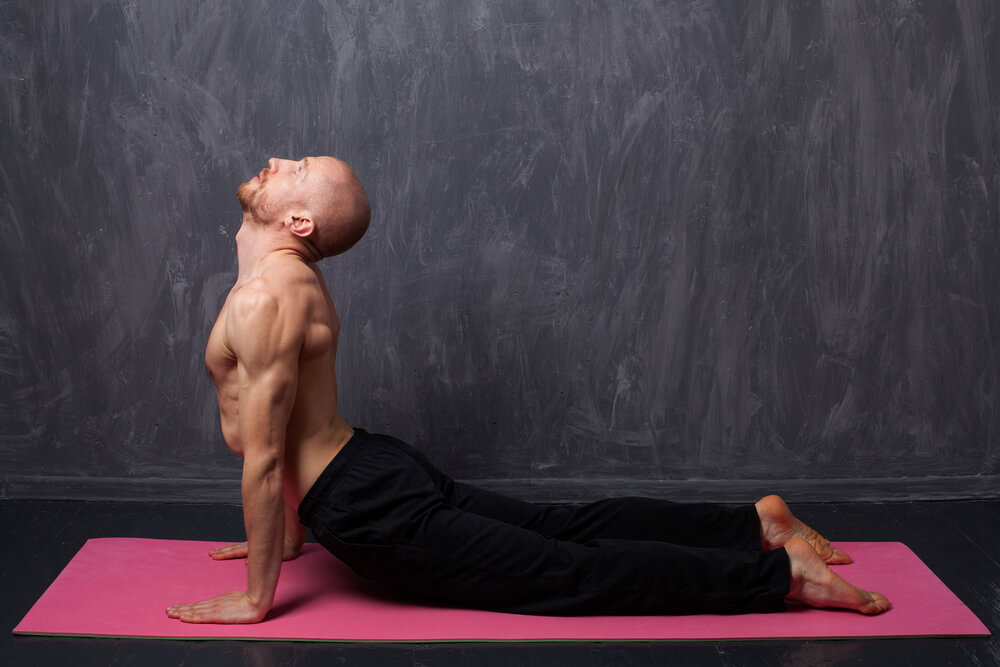
You’ve just started hitting the gym, and you’ve been hammering out sets and reps left and right.
For a few hours after your workout, you’ve got a big ol’ pump and you walk around your apartment shirtless taking an extra 10 seconds to stare every time you pass a mirror. The next day you wake up and your muscles feel like they are being stabbed with 1,000 tiny, vengeful knives. Welcome to the feeling of post-workout muscle soreness, my friend!
Delayed onset muscle soreness (DOMS) is an accepted hardship of those in the fitness community. The infamous “potty flop syndrome” (where you have to flop on the toilet after leg day because bending your knees is excruciatingly painful) and several other running jokes are anything but few and far between among gym rats. Aside from the jokes and the knowledge that it happens, most lifters don’t think a whole lot about muscle soreness in terms of what it means – and there are nearly as many opinions on the subject as there are jokes!
One group thinks that all muscle soreness is bad and is the result of doing something wrong, another group thinks that DOMS is the only way to tell if a workout was effective, and other groups sit somewhere in between the two. In this article, we’re going to break down muscle soreness, the causes of it, and also how to fix this common ailment.
What Is Muscle Soreness?
Think of the things that you’ve experienced muscle soreness after.
Sports, manual labor, work around the yard, running around with the kids; and, last but certainly not least, lifting weights!
These are all very common causes of DOMS. Do you ever experience muscle soreness from lifting up a cup of coffee?
How about from turning the pages of a book?
Hopefully, you answered no to both of these questions. The reason you answered no was because your body is conditioned to do these types of things. You’re not doing anything that requires a serious effort, you’re performing a simple, familiar movement with light resistance through a comfortable range of motion at a familiar tempo.
The reason that you get sore sometimes after pumping iron isn’t necessarily because you got a killer workout and you’re going to experience a ton of muscle growth, muscle soreness is simply the result of doing something that your body is not conditioned to do, or isn’t used to doing. If you do curls with a 25lb dumbbell twice a week for 6 months at the same amount of reps, you won’t be experiencing any muscle soreness after the first few weeks.
Is your muscle still getting stimulated?
Yes. However, if you stack 10 more reps onto each set, you’ll probably have your muscle soreness kick back in because you’re doing something you haven’t previously done consistently.
Increases in load, increases in repetition, changes in tempo, changes in rest times and changes in range of motion are all things that are likely to cause delayed onset muscle soreness. This is due to micro tears in the muscle from the new stimulus, and also from a change in the stress on your nervous system the exercise elicits.
Muscle Soreness and Workout Effectiveness
As we touched on a bit earlier, there is a large percentage of lifters and fitness enthusiasts that judge a workout’s effectiveness by how sore they are afterward. This is a counterproductive thought pattern and it poses a few setbacks, mostly because this ideology has them chasing soreness instead of a good, solid workout.
Something to remember about muscle soreness is this: an effective workout will not always make you sore, and a workout that makes you sore is not always effective. Chasing soreness as some kind of great white buffalo makes you more susceptible to injury due to the fact that you’ll always be pushing yourself in ways that have shown to make you sore. Not only does this open you up more for injury, it can hurt your progress in terms of gains in size and strength if you reach the point of overtraining. What makes you sore may not be the most beneficial for your muscles.
Another factor that affects soreness is your diet. If you cut calories and perform the same workout that didn’t make you sore, you may develop some muscle soreness. This doesn’t mean that you busted a muscle-growth plateau, it just means that your body is operating on less energy and had to work harder to perform the same tasks.
Developing a mind-muscle connection and seeing results from different applications of exercise are far more telling variables to gauge the effectiveness of your workout, not the soreness that extra 2 inches of range of motion on a lousy exercise gave you the morning after.

Common Fixes for Muscle Soreness
Muscle soreness has plagued mankind since mankind began doing mankindly things, so naturally, people have discovered a few fixes here and there over the years. Whether you’re an athlete, a farmer or a bodybuilder, these are all viable options to include in your recovery plan. However, keep in mind that a recovery plan needs to be just that, a plan – don’t expect any one of these things to be a cure-all. Think of each of these techniques as taking out a roadblock on the path to recovery. Here are the most common fixes:
Rest
I know what you’re thinking: “Rest? Well no kidding!” It probably seems obvious, but it deserves a mention because of how many people ignore proper rest times because of their eagerness to workout the same muscle group again. Rest is one of the most important parts of lifting weights. Without recovery, your muscle fibers won’t have time to repair and the subsequent workouts will stress them more and more. This can sharply increase your risk of a muscle tear, which can hinder your mobility in everyday life for weeks, months, or for the rest of your life (not to mention muscle tears are painful as all hell).
There is a common rule of thumb that you should take 48-72 hours of rest for a muscle group before you target it with exercise again. While this isn’t absolute law by any means, this is a good starting point to go by if you don’t have much experience with weightlifting yet. As you gain more experience, you can test different recovery times to see which works best for your body and which helps you make the best progress in terms of muscle gains.
Foam Rolling (Self-Myofascial Release)
Foam rolling has become an increasingly popular method of speeding up recovery and helping to work through muscle soreness. A foam roller, if you don’t already know, is a cylindrical piece of foam that you can sit, lean or lay on in different positions to “roll out” certain muscles. This myofascial release technique is great for reducing tightness and driving blood into your active muscles to speed recovery. Myofascial release is simply the physical stimulation of a muscle to combat tightness and soreness. Foam rolling is also great because it pushes waste out of the muscle, which helps keep your muscles fresh and takes away some of that pesky soreness.
Foam rolling works especially well the day after exercise, and you can foam roll nearly every muscle group on the body. With that said, there are a few body parts which work better with the racquetball technique (which we’re going to go over in the next section). First, here a few tips to follow to ensure you’re getting the most effectiveness from rolling, as well as a few common mistakes to avoid:
- A little bit of pain when rolling is normal, but don’t feel like you have to force it. If the pain is too much, shift your weight so that there’s less pressure on your muscle.
- Pausing on a particular spot can help alleviate difficult knots or pressure points
- There is no set amount of time to roll for, just keep rolling out a muscle until you feel relieved. The general rule of thumb is 30-60 seconds or about 15-20 moves
- Never roll over a joint. Not only is this bad to place that much pressure on a joint, but as we mentioned a few sections back, joint soreness is entirely different from muscle soreness and should be observed by a doctor
The Racquetball Technique
While foam rollers are a great way to target specific muscles and work their magic, the actual apparatus used (the foam roller) is often very long and can be clumsy at targeting small areas like your neck or traps. This is where a racquetball or lacrosse ball can come in handy. If you take one of these balls and place it between your body and a surface and do some rolling around looking for a sore spot, you can work with more precision towards stimulating that muscle and rolling out some of the stiffness and soreness. Be careful with this method, however, as it can be intense in terms of pain, due to the fact that the pressure you’ll be putting on your muscles will be more localized and concentrated.
Contrast Showers
Ice baths used to be a really popular practice to decrease inflammation. In fact, they still are, but contrast showers are their more developed relatives. Contrast showers are where you alternate hot and cold water for specific intervals of time. Studies of this method have proven that this temperature alternation reduces tension, reduces inflammation and increases blood flow. Increasing the blood flow to a muscle is a sure way to speed up recovery. More blood flow to a muscle means more nutrients flooding the muscle and helping it rebuild itself. The hot water also provides a mild effect of reducing the tension in a muscle and decreasing neuralgia.
Stretching
Stretching has earned a questionable reputation in the fitness community, which it both deserves and doesn’t. Most snafus with stretching are the result of stretching ineffectively or stretching with bad form (both of which are workout killers). It was long believed that stretching before a workout lowers performance, but that rumor has since been dispelled due to the fact that it was based on a single, static stretch that didn’t effectively target the muscles focused on during the workout.
The correct way to implement stretching into your recovery plan is to perform dynamic stretching (stretching in moving, explosive motions) before and after your workout. Dynamic stretches don’t have to be a particular explosive stretch, it can simply be walking on the treadmill for 5 minutes before and after a workout with some mobility drills included. This will serve the purpose of reducing tightness and priming your muscles to work in their prime ROM so you can benefit the most from the exercise and perform that exercise safely.

Keep In Mind: Soreness as a Precursor to Injury
Having muscle soreness after an intense training session, while not desirable, is completely normal.
However, if you begin to lose the ability to differentiate muscle and joint soreness, you may be in for an unpleasant surprise. Joint injuries due to repetitive stress are common in the gym, especially for those hitting mid-30s up through the golden years. Mistaking joint pain for muscle pain and trying to work through it could end up in a damaged ligament or worse, and can take you out of the gym for weeks, months or even permanently.
If you feel joint soreness that you are unfamiliar with, stop your exercise routine and consult a physician. If you’re cleared, focus on mobility work until that soreness dissipates or becomes manageable. Regular muscle soreness, however, should not be seen as a danger. Severe muscle soreness that lasts more than 4 or 5 days could indicate a strain or a tear, and you should rest and visit your doctor or physical therapist before you get back under the bar.
Conclusion
Muscle soreness is a part of being alive, especially being involved and maintaining an active and fit lifestyle. While delayed onset muscle soreness isn’t an indicator of a good workout, sometimes a good workout will give you muscle soreness for a few days. All you have to do to cure this is to remember to follow a few of the tips we’ve mentioned above. Once you’re sure that it’s muscle pain and not joint pain, take a contrast shower, stretch, rest and foam roll, or any combination that you see fit. There isn’t any one-method-cures-all, so using several methods together can be extremely helpful in returning your muscles to a relaxed state. Maintain a balanced diet, do dynamic stretching before the workout, cool down after and maintain good form, and you’ll be back on the bar off of a fresh defeat of muscle soreness before you know it.
All you have to do to cure this is to remember to follow a few of the tips we’ve mentioned above. Once you’re sure that it’s muscle pain and not joint pain, take a contrast shower, stretch, rest and foam roll, or any combination that you see fit.
There isn’t any one-method-cures-all, so using several methods together can be extremely helpful in returning your muscles to a relaxed state. Maintain a balanced diet, do dynamic stretching before the workout, cool down after and maintain good form, and you’ll be back on the bar off of a fresh defeat of muscle soreness before you know it.
-Cole Matthews
Terry
Latest posts by Terry (see all)
- How Important Are Net Carbs For Building Huge Muscle? - Apr 28, 2017
- The Matt Damon Workout Explained - Apr 27, 2017
- Watercress – Benefits And The Best Way To Consume It - Apr 26, 2017











Excellent post and great points to dispel some common myths about soreness. You’re writing is the best I’ve seen on this blog, by the way.